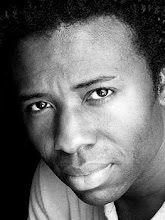Great architecture is frozen music. A melody that stretches long into the sky returning each day for an encore. Architecture can fasten itself to the heart of the beholder. If great architecture is music, Tadao Ando is the master conductor. Born in Osaka, Japan on September 13, 1941, Ando was the first born of twin boys. He grew up spending his time making wooden models of ships and airplanes, skills he learned from a gracious carpenter that lived across the street from his family home. Ando has the “it” factor, that hard to define, intangible charisma.
Whether it is his physical similarity to The Beatles, (he looks amazingly like the 5th Beatle), or just the calm confidence he exudes. Whatever it is, he’s got “it.”
In his early twenties, Ando began to sense that architectural design was in his blood. Just to make sure, he tried his hand at several professions. He spent time as a truck driver and a boxer. His small stature and meek appearance may not have fit well within such physical occupations. Returning to his senses, Ando concentrated on architecture.
With little means, and no pedigree, he found himself without any practical tools to enter the industry. It was upon this realization that he made the decision that changed his life. Ando decided that if he couldn’t study in the great institutions, he would study the results of its students. His lack of education worked to twist fate in his favor. He knew intuitively that the work all around him was the result of architects, many of whom had been to the greatest learning centers. To study their work was to go to class.
First, he took a tour of Japan and studied the local temples, shrines, and tea houses. He then found his way to Europe, Africa and the United States. Ando learned about architecture by visiting great architecture, a rather simple philosophy. He credits great reading such as Le Corbusier, Ludwig Mies Van Der Rohe, and Alvar Aalto as having great impact on how he processed the works he physically visited.
Ironically, his skill has granted him invitation to teach in the same institutions he did not attend, including: Tokyo University, Yale, Harvard and Columbia. There is a greatness that can only be found in the work of an artist untouched by the institutionalized education process. Ando is the perfect example of this.
One of the most awe-inspiring pieces of work credited to Ando is The Church of The Light in Osaka, Japan. This house of worship is one of the most fascinating pieces work, religious or otherwise. Its genius is not in the grandeur of its size or intricacy of wall paintings, but the courage to allow nature to create is own surrounding without human intervention. The sanctuary sits such that the suns rays create an image of a cross that illuminates the entire room with its glow. Absolutely breathtaking.
Architectural awards granted to Ando are too numerous to number, the most notable are: French Academy of Architecture, Carlsberg Architectural Prize, Denmark, Japan Art Academy Prize, Pritzker Architecture Prize, Chevalier de l’Ordre des Arts et des Lettres, France, Praemium Imperiale First “FRATE SOLE” Award in Architecture, Officier de l'Ordre des Arts et des Lettres, France, Royal Gold Medal, Royal Institute of British Architects (RIBA), AIA Gold Medal, and the American Institute of Architects (AIA).
Notable projects that have met critical acclaim include: Hyogo Prefectural Museum of Art, Kobe, Hyōgo Prefecture, Japan, Modern Art Museum of Fort Worth, Fort Worth, Texas, Piccadilly Gardens, Manchester, UK, House in Shiga, Ōtsu, Shiga, Japan, Benesse House, Naoshima, Kagawa, Japan, and 21_21 Design Sight, Minato-ku, Tokyo, Japan.
Every once and awhile comes a designer who truly understands his proportion in the great scheme of nature, and consequently designs from a refreshing, uncluttered humility. Tadao Ando is such an architect. The New York Times architectural critic Paul Goldberger commenting on the work of Ando states, "Ando is right in the Japanese tradition: spareness has always been a part of Japanese architecture, at least since the 16th century; [and] it is not for nothing that Frank Lloyd Wright more freely admitted to the influences of Japanese architecture than of anything American.”
Tadao Ando is a true original, one who learns by sight and feel. When asked in a 2001 interview in Milan, Italy whether he reads architectural design magazines Ando responded, “I don’t read them, I just look at the pictures.”
Tuesday, June 10, 2008
Subscribe to:
Post Comments (Atom)

No comments:
Post a Comment